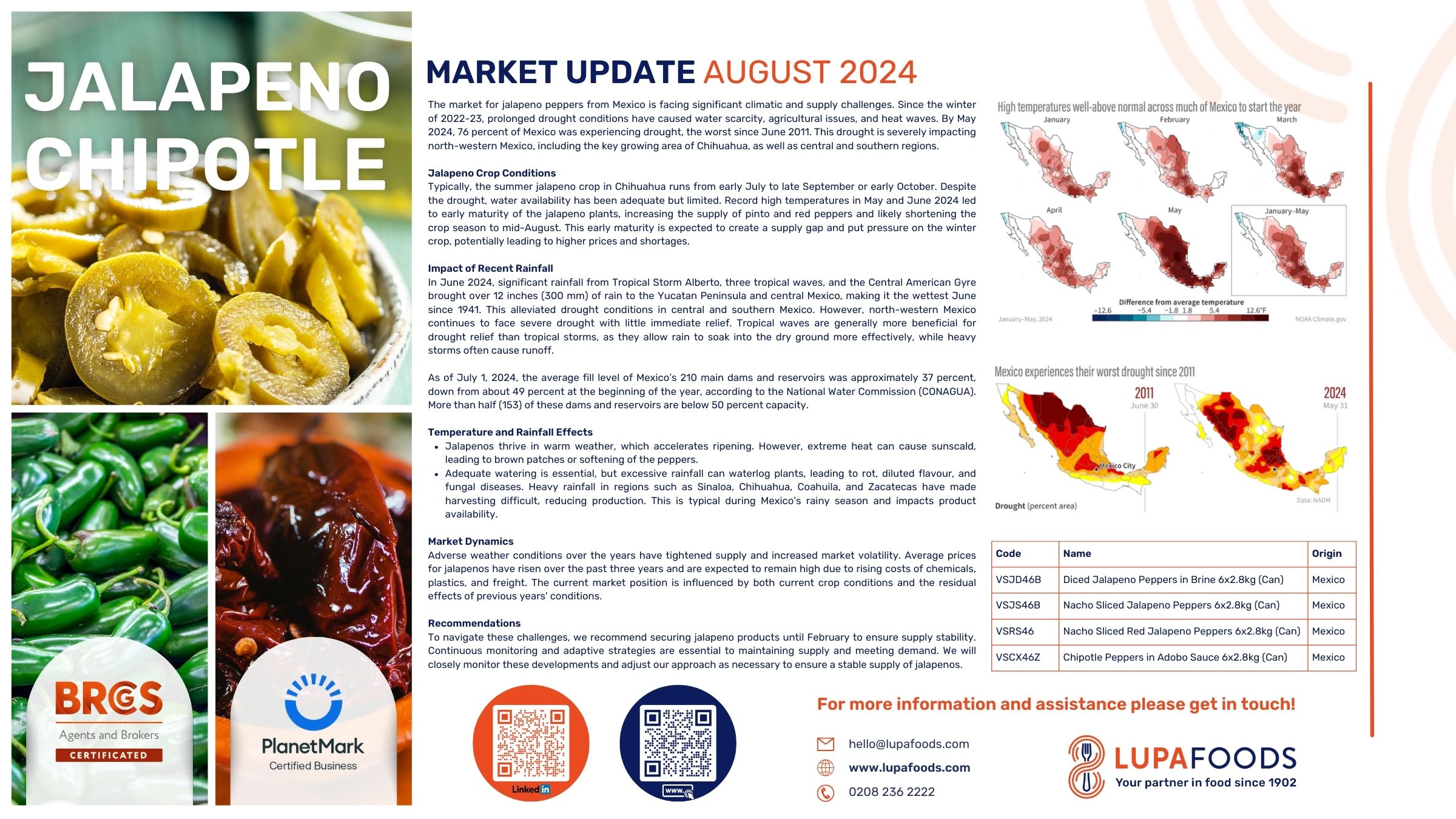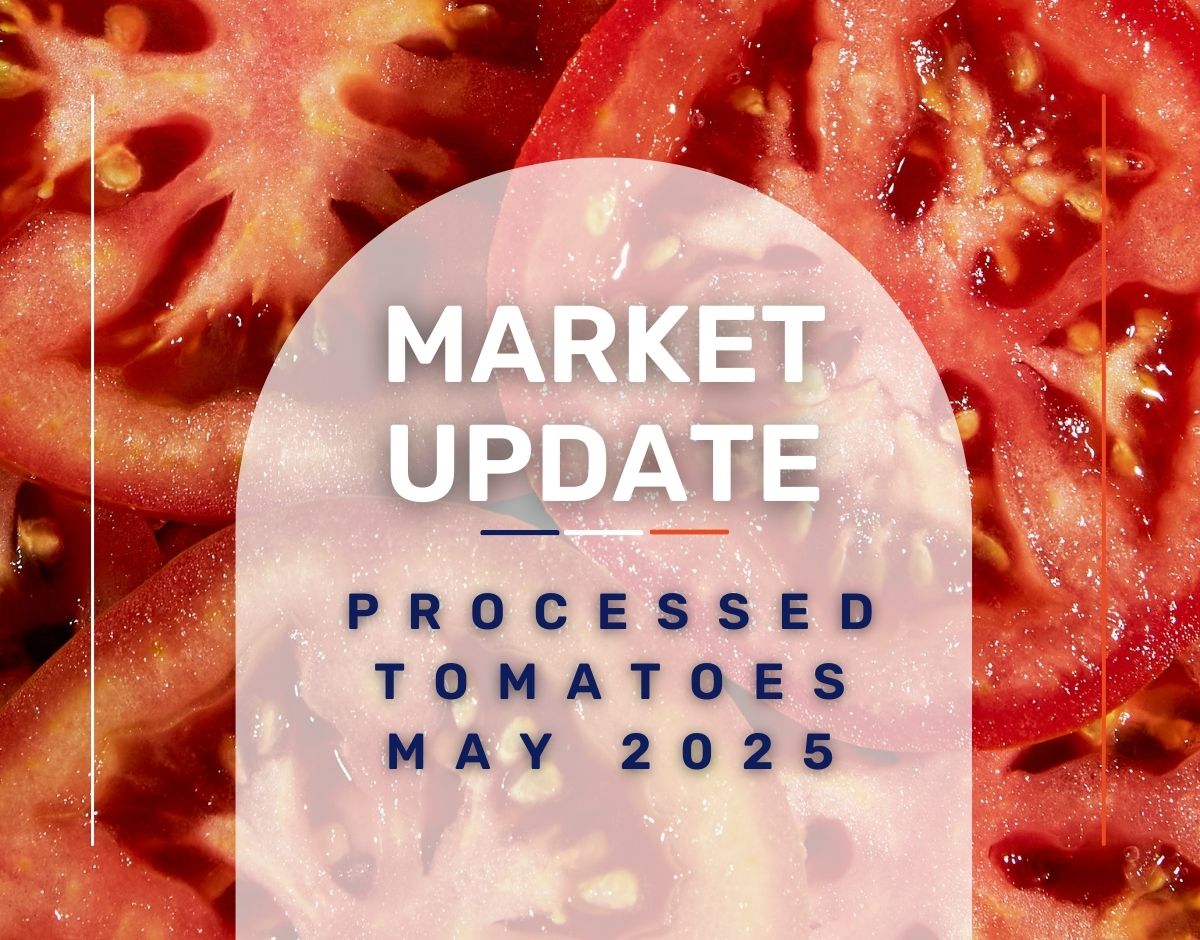The market for jalapeno peppers from Mexico is facing significant climatic and supply challenges. Since the winter of 2022-23, prolonged drought conditions have caused water scarcity, agricultural issues, and heat waves. By May 2024, 76 percent of Mexico was experiencing drought, the worst since June 2011. This drought is severely impacting north-western Mexico, including the key growing area of Chihuahua, as well as central and southern regions.
Jalapeno Crop Conditions
Typically, the summer jalapeno crop in Chihuahua runs from early July to late September or early October. Despite the drought, water availability has been adequate but limited. Record high temperatures in May and June 2024 led to early maturity of the jalapeno plants, increasing the supply of pinto and red peppers and likely shortening the crop season to mid-August. This early maturity is expected to create a supply gap and put pressure on the winter crop, potentially leading to higher prices and shortages.
Impact of Recent Rainfall
In June 2024, significant rainfall from Tropical Storm Alberto, three tropical waves, and the Central American Gyre brought over 12 inches (300 mm) of rain to the Yucatan Peninsula and central Mexico, making it the wettest June since 1941. This alleviated drought conditions in central and southern Mexico. However, north-western Mexico continues to face severe drought with little immediate relief. Tropical waves are generally more beneficial for drought relief than tropical storms, as they allow rain to soak into the dry ground more effectively, while heavy storms often cause runoff.
As of July 1, 2024, the average fill level of Mexico’s 210 main dams and reservoirs was approximately 37 percent, down from about 49 percent at the beginning of the year, according to the National Water Commission (CONAGUA). More than half (153) of these dams and reservoirs are below 50 percent capacity.
Temperature and Rainfall Effects
-
- Jalapenos thrive in warm weather, which accelerates ripening. However, extreme heat can cause sunscald, leading to brown patches or softening of the peppers.
- Adequate watering is essential, but excessive rainfall can waterlog plants, leading to rot, diluted flavour, and fungal diseases. Heavy rainfall in regions such as Sinaloa, Chihuahua, Coahuila, and Zacatecas have made harvesting difficult, reducing production. This is typical during Mexico’s rainy season and impacts product availability.
Market Dynamics
Adverse weather conditions over the years have tightened supply and increased market volatility. Average prices for jalapenos have risen over the past three years and are expected to remain high due to rising costs of chemicals, plastics, and freight. The current market position is influenced by both current crop conditions and the residual effects of previous years’ conditions.
Recommendations
To navigate these challenges, we recommend securing jalapeno products until February to ensure supply stability. Continuous monitoring and adaptive strategies are essential to maintaining supply and meeting demand. We will closely monitor these developments and adjust our approach as necessary to ensure a stable supply of jalapenos.
| Code | Products | Origin |
| VSJD46B | Diced Jalapeno Peppers in Brine 6×2.8kg (Can) | Mexico |
| VSJS46B | Nacho Sliced Jalapeno Peppers 6×2.8kg (Can) | Mexico |
| VSRS46 | Nacho Sliced Red Jalapeno Peppers 6×2.8kg (Can) | Mexico |
| VSCX46Z | Chipotle Peppers in Adobo Sauce 6×2.8kg (Can) | Mexico |





